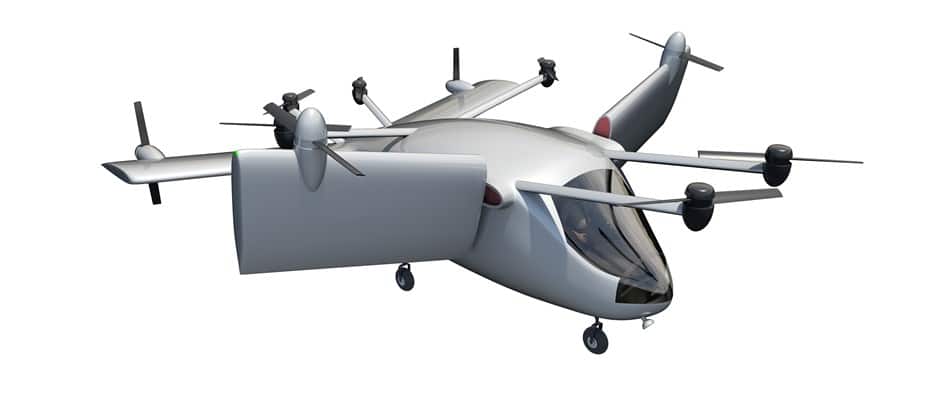Air Ambulance

Mini-Bee is specially designed to offer fast and light air ambulance support when time is of the essence. In urgent situations, it provides direct access to medical care with essential equipment onboard like oxygen, electricity, and vital monitoring tools.
It can be deployed within 24 hours to an emergency site and rapidly reach its final destination, even in disaster zones where road access is limited or nonexistent.
Revolutionizing Air Ambulance Services
In today’s world, every second matters during a medical emergency. Yet, traffic congestion and long distances often hinder traditional ground ambulances. Mini-Bee changes the game with VTOL technology, bypassing these obstacles to deliver swift, life-saving transport.
Whether in cities or hard-to-reach rural zones, Mini-Bee ensures that patients are transported quickly to the nearest hospital, dramatically improving survival rates and outcomes.
Key Features of Mini-Bee Air Ambulance
- Speed and Efficiency: Mini-Bee’s hybrid propulsion delivers unmatched reactivity to emergencies.
- Versatility: It lands in tight areas—urban rooftops, rural clearings—thanks to VTOL capability.
- Safety & Comfort: Reduced vibrations, onboard climate control, and advanced life support ensure patient well-being.
- Affordability: Its efficient systems cut operational costs while boosting reliability.
Mini-Bee is more than a flying machine—it’s a lifeline. Every design choice was made to ensure that no life is left waiting when seconds matter. From disaster zones to crowded cities, we aim to bring care closer and faster than ever before.
Need rapid medical support?
Reach out today and discover how Mini-Bee can make a difference when it matters most.
What Does Light Air Ambulance Mean?
A light air ambulance is a compact aircraft equipped for stabilized patient transport. Unlike helicopters with winch systems, these vehicles are built for speed and efficiency without complex boarding mechanisms.
Typically powered by single or twin engines, light air ambulances carry life-saving equipment like oxygen tanks and defibrillators, allowing for onboard emergency care. They are used for both rapid evacuation and inter-hospital transfers over long distances.
How Fast Is a Light VTOL Air Ambulance?
Depending on the mission and aircraft type, light air ambulances fly between 160 km/h. For quick hops between hospitals or to remote zones, the VTOL configuration is ideal: vertical takeoff and agile navigation even in tight environments.
Real-world conditions like weather, fuel optimization, and terrain might reduce the cruising speed, but Mini-Bee remains one of the fastest, most adaptable solutions on the market today.

How Much Does an Air Ambulance Cost?
The average cost of a light air ambulance flight ranges from €1,000 to €1,500 per flight hour. This includes aircraft operation, pilot, maintenance, and onboard medical gear.
Depending on the distance, medical needs, and destination, prices can vary. Some providers offer flexible billing or insurance partnerships to help make emergency flights more accessible.
Reducing the Logistics Costs of Air Ambulance Services
Behind every air rescue lies a complex web of logistics: aircraft readiness, crew coordination, medical equipment, and more. These elements drive up the cost of each mission—sometimes to unaffordable levels for patients.
Mini-Bee responds to this challenge with its hybrid-electric system, combining low operating costs and high performance. By reducing overhead and energy use, we make life-saving interventions available to a wider public.
Its vertical takeoff, compact size, and adaptable design allow it to serve both urban and remote areas without the need for airports or runways—drastically simplifying logistics.
Revolutionizing Emergency Response with Mini-Bee
Compact Design, Comprehensive Care
Mini-Bee is optimized for a single patient and a doctor-pilot team, allowing rapid, focused care during flight. Onboard systems include vital monitoring, oxygen, and energy supply for medical equipment.
Speed and Accessibility in Every Scenario
Mini-Bee can be deployed within minutes, even in areas unreachable by road. In disasters or hard-to-access places, it becomes a crucial asset—bringing critical care where it’s needed, fast.
We are committed to saving lives by revolutionizing the air ambulance sector. With Mini-Bee, we extend hope and healing wherever time and terrain stand in the way.
